Best Dog Beds for Bloodhounds
Bloodhounds Need An Orthopedic Bed!
Introduction
The best dog beds for Bloodhounds takes into account their health conditions, sleeping style and preferences. For health reasons an orthopedic bed is best.
Bloodhounds are renowned for their extraordinary sense of smell, making them one of the most distinguished scent hounds in the canine world. With origins dating back to medieval Europe, they were originally bred by monks to track game, and later, their tracking abilities became invaluable in law enforcement and search-and-rescue missions.
Their droopy ears and wrinkled skin help capture and funnel scent particles toward their sensitive noses, enhancing their remarkable tracking ability. They are characterized by their loose skin, expressive eyes, and long, pendulous ears.
Their calm, gentle demeanor makes them affectionate companions, but they are also known for their determination and independent nature, particularly when they catch a scent. This can make training challenging, as they may become single-minded in pursuit of a trail.
Despite their impressive work ethic, Bloodhounds are also known for being affectionate and good-natured with their families. They are typically friendly and patient, making them well-suited for homes with children or other pets. However, due to their size and strength, early training and socialization are important.
Owning a Bloodhound requires patience and understanding of their unique needs, especially their drive to follow scents, which can lead them to wander if not kept on a leash or in a secure area. With proper care, Bloodhounds make loyal, devoted companions, known for their unmatched tracking skills and gentle temperament.
In this guide we share information about Bloodhounds. The topics include best bed types, brands, facts, fun facts, health conditions, behavior issues, tips for new owners, costs of ownership, and safe foods and foods to avoid.
Video: Pros and Cons of the Bloodhound
This is a great video for potential new owners of Bloodhounds to view and determine if they want a dog of this breed.
Best Dog Bed Types
For Bloodhounds, choosing the right dog bed is crucial due to their large size, weight, and potential for joint issues. Here’s a list of the best bed types for them:
-
- Orthopedic Dog Beds: Bloodhounds are prone to hip dysplasia and other joint problems, so an orthopedic bed with memory foam can provide support for their joints.
- Example: Beds with a thick memory foam base.
- Elevated Dog Beds: Raised beds offer airflow and keep them cool, which is helpful for their heavy coats. These are also easy to clean.
- Example: Mesh-covered elevated beds.
- Bolster Beds: Bloodhounds like to feel secure, and bolster beds offer support along the sides, which they may appreciate when resting their heads.
- Example: Beds with raised edges for neck support.
- Waterproof or Washable Beds: Bloodhounds can drool a lot, so choosing a bed with a waterproof or machine-washable cover can be very convenient.
- Example: Beds with removable, machine-washable covers.
- Extra-Large Dog Beds: Bloodhounds are big dogs, so make sure the bed is appropriately sized to accommodate their full body comfortably.
- Example: Oversized memory foam beds for large breeds.
- CertiPUR-US Seal: When shopping for a memory foam bed be sure to look for the CertiPUR-US seal. The seal means that the materials used do not contain any toxins or chemicals that are harmful to humans or pets.
- Orthopedic Dog Beds: Bloodhounds are prone to hip dysplasia and other joint problems, so an orthopedic bed with memory foam can provide support for their joints.
These beds will ensure comfort and support for a Bloodhound’s needs.
Best Dog Bed Brands
Here’s a list of high-quality dog bed brands you can recommend to new Bloodhound owners, known for comfort, durability, and suitability for large breeds:
- Big Barker
- Best for: Large and giant breeds like Bloodhounds.
- Features: Specializes in orthopedic beds with 7 inches of high-grade memory foam, offering joint support and pain relief.
- Why recommend: Endorsed by veterinarians for its durability and support, with a 10-year warranty.
- PetFusion
- Best for: Comfort and easy maintenance.
- Features: Orthopedic memory foam beds with a water-resistant and machine-washable cover. Often includes bolsters for extra neck support.
- Why recommend: Good combination of comfort, ease of cleaning, and support for large breeds.
- Kuranda
- Best for: Elevated dog beds.
- Features: Durable, chew-proof raised beds with orthopedic support. Great for keeping dogs cool and dry.
- Why recommend: Ideal for dogs who tend to overheat or have joint issues, and the raised design helps with airflow.
- K9 Ballistics
- Best for: Heavy-duty durability.
- Features: Designed to resist chewing, scratching, and digging. Made from ballistic nylon, these beds also offer orthopedic foam.
- Why recommend: Perfect for Bloodhounds who may be a bit rough with their beds.
- BarksBar
- Best for: Affordable orthopedic beds.
- Features: Offers memory foam beds with built-in bolsters for comfort and head support. The covers are removable and machine washable.
- Why recommend: High-quality orthopedic beds at a more budget-friendly price point.
- FurHaven
- Best for: Variety of styles.
- Features: Provides a range of options including memory foam, cooling gel, and bolstered beds. Washable covers and orthopedic options are available.
- Why recommend: Versatile designs and styles for different sleeping preferences, from cuddly to sprawling out.
- Majestic Pet
- Best for: Bolster-style beds.
- Features: These beds offer large, soft sides, perfect for Bloodhounds that like to rest their heads on something. They are also machine washable.
- Why recommend: Provides comfort and support with easy maintenance.
These brands are great for ensuring a Bloodhound’s comfort and support while addressing their specific needs.
Facts and Fun Facts about the Bloodhound
Measurements:
- Size: Large
- Group: Hound Group
- Height Male: 25 – 27 inches
- Height Female: 23 – 25 inches
- Weight Male: 90 – 110 lbs.
- Weight Female: 80 – 100 lbs.
- Length: 32 – 37 inches
- Lifespan: 10 – 12 years
- Fully Grown: 18 – 24 months
- Colors: Black & Tan, Liver & Tan, Red
- Popularity: This breed is the 53rd most popular in the United State according to the American Kennel Club in 2023.
- Intelligence: This breed is ranked the 74th most intelligent according to Professor Stanley Coren at the University of British Columbia.
Facts
- Exceptional Sense of Smell: Bloodhounds have the most powerful sense of smell of any dog breed. Their ability to track scents over long distances and time is unrivaled.
- Historical Tracking Dogs: Bloodhounds have been used for tracking since the Middle Ages, helping hunters and law enforcement track animals and people.
- Sensitive to Scents for Days: Bloodhounds can track a scent that’s several days old, making them highly reliable for search and rescue missions.
- Saggy Skin: Their loose skin, especially around the face, helps trap scents and direct them towards their noses for better tracking.
- Long Ears for a Purpose: Bloodhounds’ long, droopy ears sweep scents toward their nose as they track.
- Gentle Giants: Despite their large size and hunting background, Bloodhounds are known for their gentle and affectionate temperament, especially with family.
- Energetic and Stubborn: Bloodhounds have high energy levels, and their independent streak can make training challenging. They respond best to positive reinforcement.
- Droolers: Due to their loose jowls, Bloodhounds are prone to excessive drooling, especially after drinking or eating.
- Tall and Heavy: Adult male Bloodhounds can stand up to 27 inches tall and weigh between 90 and 110 pounds, while females are slightly smaller.
- High Endurance: Bloodhounds have remarkable stamina, capable of following a scent for hours or even days without tiring.
- Legal Evidence: Their tracking results are so reliable that Bloodhound evidence has been admissible in court cases in some countries.
- Long Lifespan for a Large Breed: Bloodhounds typically live between 10 and 12 years, which is relatively long for such a large dog.
Fun Facts
Here’s a list of fun facts about the Bloodhound:
- Superhero Nose: A Bloodhound’s nose has around 300 million scent receptors, making them “super sniffers” compared to humans, who have only about 5 million.
- World Record Holders: Bloodhounds have set world records for the longest distances and oldest scents successfully tracked—sometimes days old and miles long!
- Sniff and Tell: A Bloodhound’s tracking ability is so accurate that their findings have been used as evidence in court cases.
- Drool Pros: These dogs are champion droolers! Their big, floppy jowls lead to lots of slobber, adding to their charm (and mess!).
- “Blooded” Royalty: The name “Bloodhound” refers to their aristocratic origins as “blooded hounds,” meaning they were carefully bred by nobility.
- Long Ear Magic: Those long, floppy ears aren’t just for show—they actually help funnel scents toward the Bloodhound’s nose!
- Celebrity Status: Bloodhounds have been featured in movies, cartoons, and literature, often portrayed as the ultimate tracking dog, including the famous character “Trusty” in Lady and the Tramp.
- Great with Kids: Despite their size, Bloodhounds are gentle and patient with children, often forming close bonds with them.
- Iconic Look: Their wrinkled skin and droopy expression make Bloodhounds instantly recognizable and endearing to dog lovers worldwide.
- Scent Masters from Birth: Bloodhound puppies start honing their tracking skills from a young age and can follow a scent trail as early as 8-10 weeks old.
- Stubborn Streak: Once they pick up a scent, Bloodhounds are incredibly focused and stubborn—almost impossible to distract from their mission!
- Perfect Pet and Worker: Bloodhounds have a dual personality. They are both diligent working dogs when tracking and affectionate, loyal companions at home.
Health Conditions
Bloodhounds, like many large breeds, are prone to certain health issues. Here’s a list of the most common health conditions in Bloodhounds:
- Hip Dysplasia: A genetic condition where the hip joint doesn’t develop properly, leading to arthritis and mobility issues. It’s common in large breeds like Bloodhounds.
- Elbow Dysplasia: Similar to hip dysplasia, this affects the elbow joints, causing pain and lameness in the front limbs.
- Bloat (Gastric Dilatation-Volvulus): A life-threatening condition where the stomach fills with gas and twists. Bloodhounds are at high risk due to their deep chests. Immediate veterinary care is required.
- Ear Infections: Due to their long, droopy ears, Bloodhounds are prone to ear infections, as moisture and debris can get trapped, leading to bacterial or yeast infections.
- Entropion: A condition where the eyelid rolls inward, causing the eyelashes to irritate the surface of the eye. It can lead to discomfort and eye damage if untreated.
- Ectropion: The opposite of entropion, where the eyelids droop outward, exposing the eye to irritants and leading to dry eye or infections.
- Hypothyroidism: A disorder of the thyroid gland that results in a low metabolic rate, leading to weight gain, lethargy, and skin issues.
- Dilated Cardiomyopathy (DCM): A heart condition where the heart muscles weaken and can’t pump blood efficiently, which can lead to heart failure.
- Progressive Retinal Atrophy (PRA): A degenerative eye disorder that leads to blindness over time. It’s inherited and progressive, with no cure.
- Skin Infections (Pyoderma): Their loose, wrinkled skin can trap moisture and bacteria, leading to skin infections.
- Cherry Eye: This condition occurs when the tear gland in the third eyelid prolapses, creating a visible red bump in the eye. It often requires surgery to correct.
- Obesity: Bloodhounds can easily gain weight if not properly exercised or fed, which can lead to or exacerbate other health conditions, such as joint problems.
- Treats: When feeding your dog treats during the training sessions, be sure they do not exceed more than 10% of his daily calories.
Regular vet checkups and proactive care can help manage these common conditions in Bloodhounds.
Behavior Concerns
Here’s a list of behavior concerns that new Bloodhound owners should be aware of:
- Stubbornness: Bloodhounds are known for their independent and stubborn nature. They tend to follow their noses rather than commands, making training a challenge, especially for first-time dog owners.
- Excessive Barking/Howling: Bloodhounds are vocal dogs and can bark or howl loudly, especially when they’re bored, anxious, or excited. Their deep voice carries, so this may be a concern in close neighborhoods.
- Strong Scent Drive: Their instinct to follow scents is incredibly strong. Once they pick up an interesting scent, they may become single-minded and difficult to recall, often ignoring commands to stop.
- Separation Anxiety: Bloodhounds can form strong bonds with their families and may suffer from separation anxiety when left alone for long periods, leading to destructive behaviors like chewing or digging.
- Destructive Chewing: Bloodhounds are notorious for chewing when bored, anxious, or teething. They can be quite destructive, so it’s essential to provide plenty of chew toys and mental stimulation.
- Pulling on Leash: Due to their size and strength, Bloodhounds can be difficult to walk, especially if they catch a scent. They tend to pull hard on the leash, so proper leash training is important from a young age.
- Escaping/Running Off: Bloodhounds are escape artists. Their powerful noses can lead them to wander off in search of a scent, so they need secure, fenced areas to prevent escaping.
- Socialization Needs: While generally friendly, Bloodhounds can be shy or aloof with strangers if not properly socialized from a young age. Early and consistent socialization helps them become well-rounded dogs.
- Slow Maturity: Bloodhounds tend to mature slowly, both mentally and physically. They can act like puppies for several years, which may include hyperactivity and lack of focus during training sessions.
- Drooling and Messiness: Bloodhounds are heavy droolers, which some owners may find challenging to manage. They can also be messy when eating or drinking, splashing water and food around.
- Possessiveness Over Food: Some Bloodhounds can develop food guarding behaviors, especially if they feel threatened or anxious during mealtimes. Early training to curb this behavior is important.
- Prey Drive: Bloodhounds can have a strong prey drive, especially toward small animals. This means they may chase cats, squirrels, or other small pets, so caution is needed in multi-pet households.
Understanding these potential behavior concerns can help new Bloodhound owners prepare and provide the right environment and training for a well-adjusted, happy dog.
Tips for New Owners
Here’s a list of tips you can share with new Bloodhound owners:
- Start Training Early: Bloodhounds are independent and stubborn, so early training is crucial. Focus on basic obedience, leash training, and commands like “come” to manage their strong scent drive.
- Be Patient and Consistent: Bloodhounds can be slow to mature and easily distracted by scents. Training requires patience, consistency, and positive reinforcement, as they don’t respond well to harsh corrections.
- Provide Mental Stimulation: These dogs have powerful noses and need mental challenges to stay happy. Engage them in scent-based games, tracking exercises, or puzzle toys to keep them mentally active.
- Secure Your Yard: Bloodhounds are escape artists and can easily wander off if they catch an interesting scent. Ensure your yard is securely fenced, and never leave them unsupervised in an unsecured area.
- Invest in a Strong Leash: Bloodhounds are big and strong, especially when they catch a scent. Use a sturdy leash and consider training tools like a no-pull harness to manage leash pulling.
- Keep an Eye on Their Ears: Their long, floppy ears are prone to infections. Regularly clean their ears and check for signs of infection like redness, odor, or excessive scratching.
- Monitor for Bloat: Bloodhounds are at risk of bloat, a life-threatening condition. Feed them smaller, more frequent meals, avoid exercise immediately after eating, and be aware of the symptoms (restlessness, drooling, swollen abdomen).
- Give Them Plenty of Exercise: Bloodhounds are energetic and need daily physical activity to stay healthy. Regular walks, runs, and playtime will help keep their energy levels in check and prevent boredom.
- Socialize Early and Often: Early socialization is key to raising a well-adjusted Bloodhound. Expose them to different people, animals, and environments from a young age to prevent shyness or fearfulness around strangers.
- Be Prepared for Drool: Bloodhounds drool a lot, especially after eating or drinking. Keep towels handy to wipe their faces and expect drool on your furniture, floors, and clothes.
- Use Positive Reinforcement: Bloodhounds respond best to positive reinforcement like treats and praise. Avoid using punishment-based training methods, as they can become stubborn or shut down.
- Plan for Longevity: Bloodhounds live for 10-12 years and require a long-term commitment. Regular vet checkups, a healthy diet, and maintaining a good balance of physical and mental activities will help them thrive.
These tips can help new Bloodhound owners navigate the unique challenges of the breed while fostering a loving and well-behaved companion!
Costs of Ownership
Here’s a list of the average costs associated with owning a Bloodhound:
Initial Costs:
- Purchase Price or Adoption Fee:
- Breeder: $1,000 – $2,500 (depending on bloodline, location, and breeder reputation).
- Adoption: $100 – $500 (from a rescue or shelter).
- Initial Vet Visits:
- $150 – $300 (for vaccinations, checkups, and initial health screenings).
- Spaying/Neutering:
- $200 – $500 (depending on the clinic or vet).
- Microchipping:
- $25 – $50 (one-time cost).
- Crate, Bed, and Essentials:
- $150 – $300 (for a crate, bedding, leashes, bowls, and grooming tools).
Ongoing Annual Costs:
- Food:
- $500 – $900 per year (depending on the quality of the dog food and the size of the dog).
- Routine Veterinary Care:
- $300 – $600 annually (for checkups, vaccinations, flea/tick/heartworm prevention, etc.).
- Pet Insurance:
- $300 – $700 per year (depending on coverage and the insurance provider).
- Grooming:
- $100 – $300 per year (Bloodhounds don’t require professional grooming often, but ear cleanings and occasional baths can add up).
- Training:
- $200 – $600 (for group classes, private lessons, or professional training services, especially important due to their stubborn nature).
- Toys and Chew Items:
- $100 – $300 annually (Bloodhounds can be heavy chewers, so durable toys and chew items are a must).
- Pet Sitting/Boarding (if you travel):
- $25 – $75 per day (depending on your location and the service provider).
Potential Additional Costs:
- Emergency Vet Care:
- $500 – $2,000+ per incident (depending on the severity of the issue, especially for conditions like bloat).
- Bloat Prevention Surgery (Gastropexy):
- $400 – $1,000 (sometimes recommended for deep-chested dogs to reduce the risk of gastric torsion).
- Drool Management Supplies:
- $50 – $100 annually (towels, wipes, etc., to manage their drooling).
- Fencing/Property Modifications:
- $500 – $3,000 (if you need to install or reinforce fencing to keep your Bloodhound safely contained).
Overall Estimated Annual Costs:
- $1,500 – $3,000 per year, depending on your location, choices in care, and the dog’s health.
These estimates give new Bloodhound owners a sense of what to expect financially, from the initial setup to ongoing care, ensuring they can plan and budget accordingly.
Safe Foods and Foods to Avoid
Safe Foods for Bloodhounds:
- Lean Meats: Chicken, turkey, and beef (cooked and unseasoned) provide excellent sources of protein.
- Fish: Salmon and sardines (cooked and boneless) are rich in omega-3 fatty acids, which are great for skin and coat health.
- Vegetables: Carrots, green beans, peas, sweet potatoes, broccoli, and spinach are healthy, nutrient-rich options.
- Fruits: Apples (seedless), blueberries, bananas, watermelon, and strawberries are safe in moderation and provide antioxidants.
- Rice and Pasta: Plain, cooked white or brown rice and pasta can be given as a digestible carbohydrate source.
- Eggs: Cooked eggs (scrambled or boiled) are great for protein and provide essential amino acids.
- Peanut Butter: In moderation, unsalted and xylitol-free peanut butter is a tasty treat packed with healthy fats and protein.
- Pumpkin: Cooked or canned (plain, not spiced) pumpkin is good for digestion and can help with upset stomachs.
- Plain Yogurt: Provides probiotics that support digestion but avoid flavored or sugary versions.
- Oatmeal: A good fiber source that can support digestive health in moderation.
Foods to Avoid for Bloodhounds:
- Chocolate: Contains theobromine, which is toxic to dogs and can lead to vomiting, diarrhea, or even seizures.
- Grapes and Raisins: Extremely toxic to dogs and can cause kidney failure, even in small amounts.
- Onions and Garlic: These can damage a dog’s red blood cells, leading to anemia.
- Avocado: Contains persin, which can cause vomiting, diarrhea, and other health issues.
- Alcohol: Can lead to severe intoxication, even in small amounts, and is highly dangerous.
- Xylitol (Artificial Sweetener): Found in gum, candy, and some peanut butters, it can cause a dangerous drop in blood sugar levels, leading to seizures or liver failure.
- Macadamia Nuts: Toxic to dogs, causing vomiting, weakness, tremors, and hyperthermia.
- Cooked Bones: They can splinter and cause blockages or tears in the digestive tract.
- Caffeinated Beverages: Coffee, tea, or energy drinks can cause rapid heart rate, tremors, or even death.
- Fatty or Fried Foods: These can lead to pancreatitis and obesity-related health issues.
- Dairy Products: Some dogs are lactose intolerant, and consuming large amounts of milk or cheese can cause digestive upset.
- Raw Dough: The yeast in raw dough can expand in a dog’s stomach, causing bloating and discomfort.
By offering a balanced diet and avoiding toxic foods, you can help ensure your Bloodhound stays healthy and happy.
Conclusion
Owning a Bloodhound can be a rewarding yet challenging experience. These dogs are celebrated for their exceptional scent-tracking skills and make wonderful companions for those who understand their needs.
Their gentle temperament, combined with their dedication to tracking, sets them apart from other breeds.
However, it’s important to be prepared for the behavioral quirks and physical care requirements that come with owning a Bloodhound.
Their strong noses can lead them astray, and their independent nature means training requires patience, consistency, and positive reinforcement. Bloodhounds thrive in homes where they receive plenty of physical exercise and mental stimulation, especially through scent-based games and activities.
Regular veterinary care and attention to their specific health risks, such as bloat and hip dysplasia, are essential for ensuring a long, healthy life. While they may be prone to certain health conditions, with proper care and attention, Bloodhounds live full and active lives.
Their drool, stubbornness, and love for chewing may require extra vigilance, but for those who appreciate their unique personalities, the loyalty and affection they offer make it worthwhile.
For prospective owners, being aware of the financial, emotional, and physical commitment required is key to successfully raising a happy and healthy Bloodhound.
Ultimately, with the right approach, Bloodhounds can be loving and loyal companions who enrich the lives of their owners, providing endless adventure and companionship.
You can check out the other dog breed information by clicking HERE!
Shop Dog Beds
Shop dog beds for your dog by selecting or clicking on any bed of choice. You will be taken to Amazon where you can read customer reviews and answered questions and place the order. As an Amazon Associate, I earn from qualifying purchases. Your purchase price is the same as if you shop directly on Amazon. The price at time of publish is included below to give you an idea of what the price is; however, it is subject to change.
Shop Rectangle Dog Beds
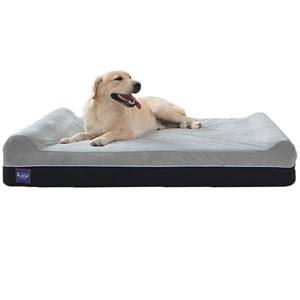
Laifug Large Grey Orthopedic Rectangle Bed
Price At Time of Publish $130.00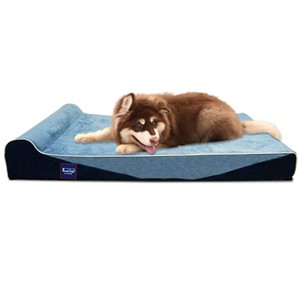
Laifug Large Blue Orthopedic Rectangle Bed
Price At Time of Publish $130.00 $110.00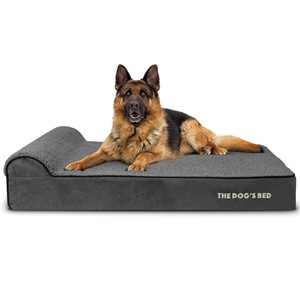
The Dogs Bed XL Grey Orthopedic Rectangle Bed
Price At Time of Publish $130.00 $185.00
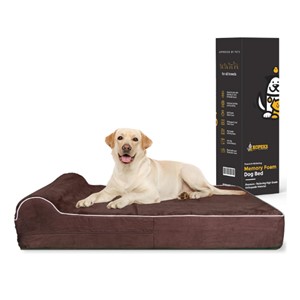
KOPEKS Jumbo Orthopedic Rectangular Bed
Price At Time of Publish $130.00 $110.00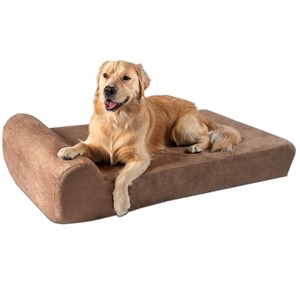
Big Barker XL Orthopedic Rectangle Bed
Price At Time of Publish $130.00 $240.00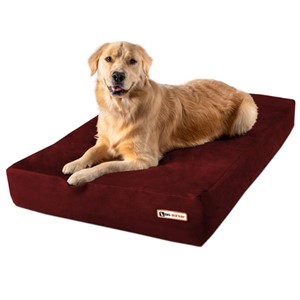
Big Barker XL Burgundy Orthopedic Rectangle Bed
Price At Time of Publish $130.00 $200.00

Serta XL Brown Orthopedic Rectangle Bed
Price At Time of Publish $130.00 $80.00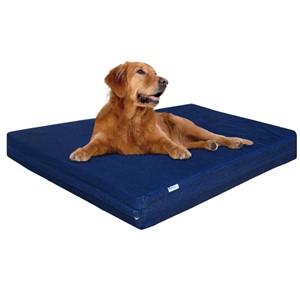
DogBed4Less XL Blue Orthopedic Rectangle Bed
Price At Time of Publish $130.00 $80.00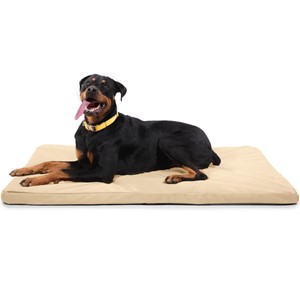
K9 Ballistics XL Sandstone Orthopedic Crate Pad
Price At Time of Publish $130.00 $159.00
Shop Bolster Dog Beds
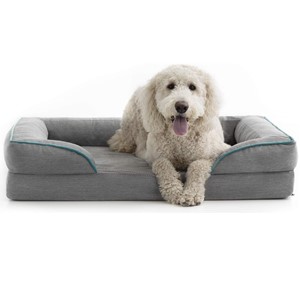
Brindle XL Gray Orthopedic Bolster Bed
Price At Time of Publish $130.00 $79.00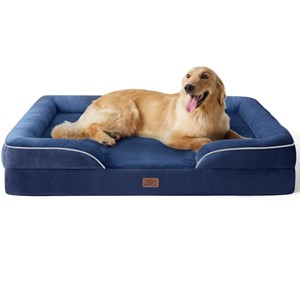
Bedsure XL Blue Orthopedic Bolster Bed
Price At Time of Publish $130.00 $76.00
Bedsure XL Grey Orthopedic Bolster Bed
Price At Time of Publish $130.00 $60.00
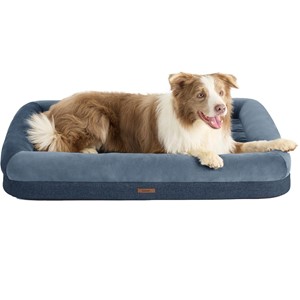
Lesure XL Navy Orthopedic Bolster Bed
Price At Time of Publish $130.00 $40.00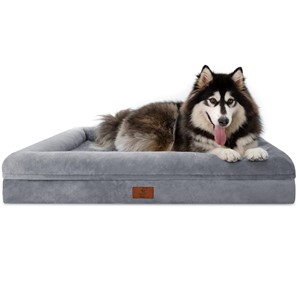
Yiruka XL Grey Orthopedic Bolster Bed
Price At Time of Publish $130.00 $55.00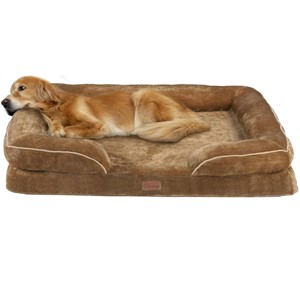
Yitahome XL Brown Orthopedic Bolster Bed
Price At Time of Publish $130.00 $37.00
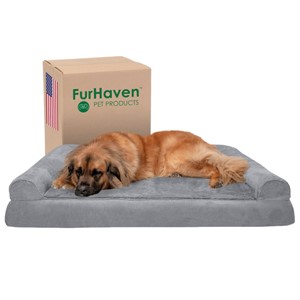
Furhaven XL Gray Orthopedic Bolster Bed
Price At Time of Publish $130.00 $130.00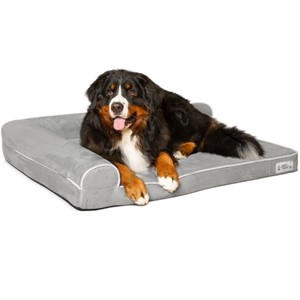
PetFusion XL Grey Orthopedic Bolster Bed
Price At Time of Publish $130.00 $60.00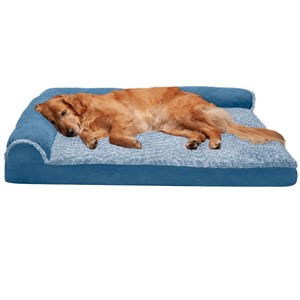
Furhaven Jumbo Blue Orthopedic Bolster Bed
Price At Time of Publish $130.00 $60.00
Shop Elevated Dog Beds
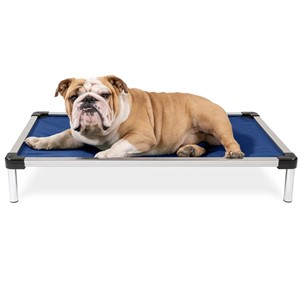
K9 Ballistics Chew Proof Elevated Small Bed
Price At Time of Publish $130.00 $129.00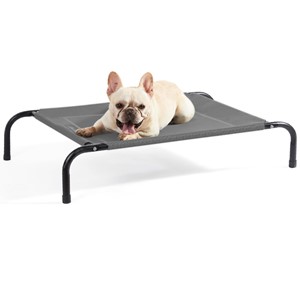
Bedsure Medium Elevated Dog Bed
Price At Time of Publish $130.00 $33.00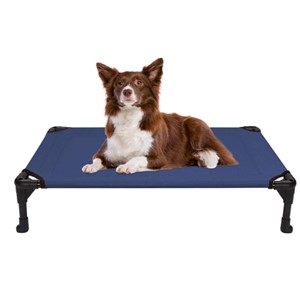
Veehoo Medium Elevated Dog Bed
Price At Time of Publish $130.00 $45.00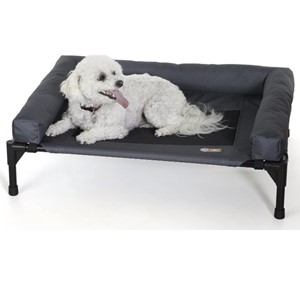
K&H Pet Products Elevated Bolster Dog Bed
Price At Time of Publish $130.00 $57.00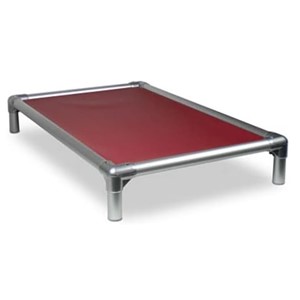
Kuranda Elevated Chew Proof Small Dog Bed
Price At Time of Publish $130.00 $134.00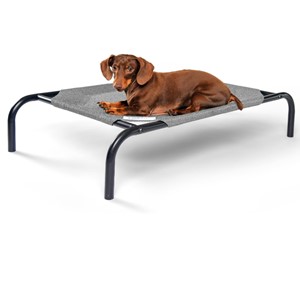
Coolaroo Small Elevated Dog Bed
Price At Time of Publish $130.00 $21.00
Related Articles
Below are some other articles you may be interested in reading. Just select on the topic of interest to learn more about it.
- Best Healthy Dog Food Brands
- Christmas Presents for My Dog
- Crates for Dogs
- Critical Signs Your Dog Needs Help
- Dog Training Techniques
- How To Train a Puppy
- Positive Reinforcement for Dog Training
- Puppy Proofing Your House
- Training Dog with Treats
- Using Alexa for Dog Behaviors
Go back to the Dog Luxury Beds home page.

